In 2001 I made the headlong leap into the nonprofit world. It was a shocking experience to say the least. The culture, the economic outlook, the reporting – it all was totally different from the marketplace business activities with which I was accustomed to working. And it wasn’t long until I heard the now infamous words that all nonprofit leaders hear, “Tell me Doug, how much does your organization spend on overhead?” Each time I would hear that question a small voice in the back of my head would ask, “Why does it matter? Don’t the results speak for themselves?”
I had forgotten about this reality until meeting over coffee with a nonprofit leader last week. He was telling me about his frustration with that type of question. Welcome to the nonprofit masses, my friend. It goes without saying that it is a double standard. How much does the average business spend in “overhead”? How much does the local church spend in “overhead”? How much does the nonprofit watchdog spend on “overhead”? We as nonprofit donors have been lulled into believing that anything more than 20% is wasteful. And yet, those of us who claim that standard, spend in the neighborhood of 60% for our own organizations.
Why are nonprofits held to a different standard? Frankly, I think it is because of what I have termed “tired thinking”.
Here are a few examples:
Tired Thinking Principle #1: Being accountable to overhead expenses helps keep nonprofits focused on mission critical programs.
Of course every nonprofit leader reading this knows that is a ridiculous statement. NEWS FLASH: Nonprofit leaders are leading in the nonprofit sector precisely because of the mission – they don’t need to be reminded. Moreover, the stark reality is that nonprofits either have made a work of art out of side-stepping letter-of-the-law reporting structures so that they can report low overhead, or they are unaware of how to report it correctly. Either way, it is grossly inaccurate.
- Nearly 13% of operating public charities reported spending nothing for management and general expenses (The Nonprofit Overhead Cost Study)
- 37% of operating public charities with at least $50K in private donations reported no associated expenses for fundraising or special events on thier 2000 IRS Form 990.
- 75% – 85% of NPO’s incorrectly reported expenses/costs associated with grants.
Tired Thinking Principle #2: Low overhead is a direct indicator of a nonprofit’s organizational effectiveness.
Unfortunately, the data doesn’t show this to be the case. According to a study by the Stanford Social Innovation Review (Fall 2009), “Organizations that build robust infrastructure – which includes sturdy information technology systems, financial systems, skills training, fundraising processes, and other essential overhead – are more likely to succeed than those that do not.” Furethermore, a 2006 survey of 2,000 nonprofit executives from eight metropolitan areas revealed that “receiving general operating support play a major role in reducing burnout and stress among executive directors.” (Daring to Lead 2006: A National Study of Nonprofit Executive Leadership)
Tired Thinking Principle #3: Low overhead helps to ensure program sustainability.
Indiana University’s Nonprofit Overhead Costs Project easily refutes this notion.
Symptoms of Underinvestment in Overhead:
- Creates limited investment in staff development. RESULT: Increased turnover, limited ability to enhance staff capacity, difficulty building a senior team from within.
- Inexperienced staff for administrative roles. RESULT: High turnover and poor work quality.
- Poor IT infrastructure. RESULT: Increased system crashes/downtime, loss of data, and limited information sharing.
- Poor performance management systems. RESULT: Limited ability to track donor/donation outcomes (especially if you operate more than one site), and limited abilities to generate necessary reporting for grant makers and future philanthropic donors.
“Tired Thinking” results in a myriad of problems for these entrusted to implement and sustain the programs and activities that affect so many each day. Siimply placing an arbitrary number in dollars spent on overhead does not work. It doesn’t work in your business and it doesn’t work in the nonprofit space.
Boards and donors alike need to relax their grip and trust the staff and directors to do their jobs. They know what they need to spend to make the program successful, in turn creating successes for the organization as a whole. If you find they are not implementing appropriate fiduciary constraints, replace them or move your money.
One thing is for sure – hamstringing executive directors with meaningless arbitrary constraints as it pertains to their overhead will only ensure your mission eventually fails to reach it’s potential.
For more information, I recommend you follow the ongoing work of The Overhead Myth project by downloading their open letter here. You can also view their website for more information, including an area devoted to research on this issue.

For a printable PDF copy of the above article click here.



